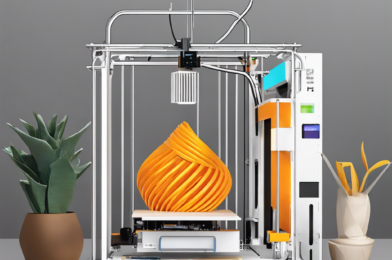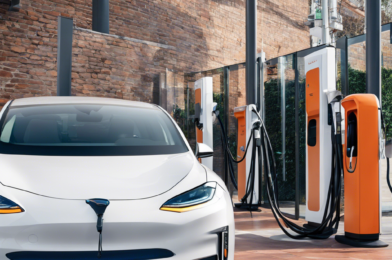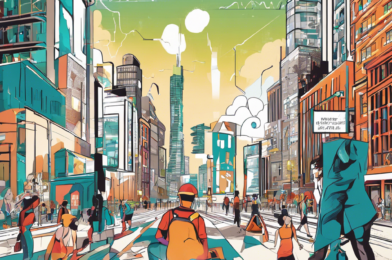The race to combat climate change and create a more sustainable future is on, and green tech innovations are leading the charge. With the world facing environmental challenges on multiple fronts, from rising global temperatures to plastic-choked oceans, it’s clear that we need innovative solutions to preserve our planet for future generations. Here are ten eco-friendly technologies that are shaping our future for the better:
## 1. Renewable Energy Sources
Solar, wind, and hydropower are becoming increasingly popular as the world seeks to reduce its reliance on fossil fuels. These renewable energy sources not only help reduce our carbon footprint but also offer a more sustainable and endless supply of energy. Countries like China and the United States are leading the way in solar and wind power adoption, while Iceland has harnessed the power of geothermal energy, with nearly 100% of its electricity generation coming from renewable sources.
## 2. Electric Vehicles
The shift towards electric mobility is revolutionizing the transportation industry. Electric vehicles (EVs) are quieter, more efficient, and emit zero tailpipe emissions, offering a cleaner and more sustainable alternative to traditional combustion engines. With major automakers committing to EV production and the development of more efficient batteries, we can expect to see more of these eco-friendly cars on the road soon.
## 3. Smart Cities
The integration of technology and data in urban planning is giving rise to smart cities. By utilizing smart technology, cities can become more efficient and environmentally friendly. This includes the use of smart grids to optimize energy use, intelligent transportation systems to reduce congestion and emissions, and smart waste management systems to improve recycling and reduce landfill waste.
## 4. Green Buildings
Green building practices are being adopted in the construction industry to reduce the environmental impact of the built environment. This includes the use of sustainable materials, energy-efficient designs, and the incorporation of renewable energy sources. LEED certification, which stands for Leadership in Energy and Environmental Design, has become a sought-after standard for buildings seeking to minimize their carbon footprint.
## 5. Carbon Capture and Utilization
Carbon capture and utilization (CCU) technology offers a way to reduce carbon emissions and combat climate change. CCU involves capturing carbon dioxide emissions from industrial processes and utilizing them for productive purposes, such as enhanced oil recovery or the production of synthetic fuels. This technology has the potential to transform harmful emissions into valuable resources.
## 6. Vertical Farming
Vertical farming is an innovative approach to agriculture that maximizes space and resources by growing crops in vertically stacked layers. This method uses controlled-environment agriculture (CEA) technology and specialized lighting to produce food in urban areas, reducing transportation costs and land use while increasing crop yields. Vertical farms can operate year-round, use up to 95% less water than traditional farming, and eliminate the need for pesticides.
## 7. Biodegradable Plastics
As plastic pollution continues to be a major environmental concern, biodegradable plastics offer a promising solution. These materials are designed to break down naturally in the environment, reducing the long-term impact of plastic waste. Made from renewable resources such as corn starch or vegetable fats and oils, biodegradable plastics can be used in packaging, disposable items, and even in agriculture as mulch films.
## 8. Ocean Cleanup Technologies
Innovative technologies are being developed to address the massive problem of ocean pollution. Projects like The Ocean Cleanup are using large-scale systems to collect plastic waste from the ocean’s surface. Other initiatives focus on preventing plastic from entering waterways in the first place, such as Mr. Trash Wheel in Baltimore, which uses water wheels to remove trash from rivers before it reaches the ocean.
## 9. Energy Storage Solutions
As renewable energy sources become more prevalent, the need for efficient energy storage solutions grows. Advanced battery technologies, such as solid-state batteries and flow batteries, are being developed to store excess energy from renewable sources for use during periods of low generation. Additionally, innovative concepts like pumped hydro storage and compressed air energy storage are being explored to manage grid-scale energy storage needs.
## 10. Artificial Intelligence for Environmental Monitoring
Artificial Intelligence (AI) is increasingly being used to monitor and protect the environment. AI-powered systems can analyze satellite imagery to detect deforestation, track wildlife populations, predict natural disasters, and optimize resource management. For example, Microsoft’s AI for Earth program supports projects that use AI to solve global environmental challenges in areas such as climate change, agriculture, biodiversity, and water.
These ten eco-friendly technologies represent just a fraction of the innovative solutions being developed to address our environmental challenges. As we continue to invest in green tech and sustainable practices, we move closer to a future where human progress and environmental preservation go hand in hand. By embracing these technologies and continuing to innovate, we can work towards a cleaner, greener, and more sustainable world for generations to come.









